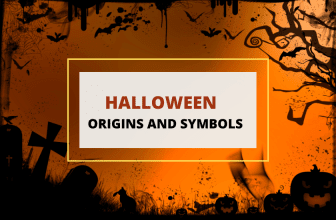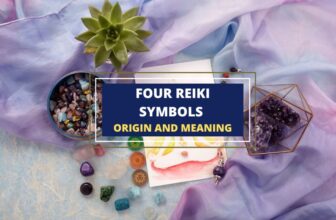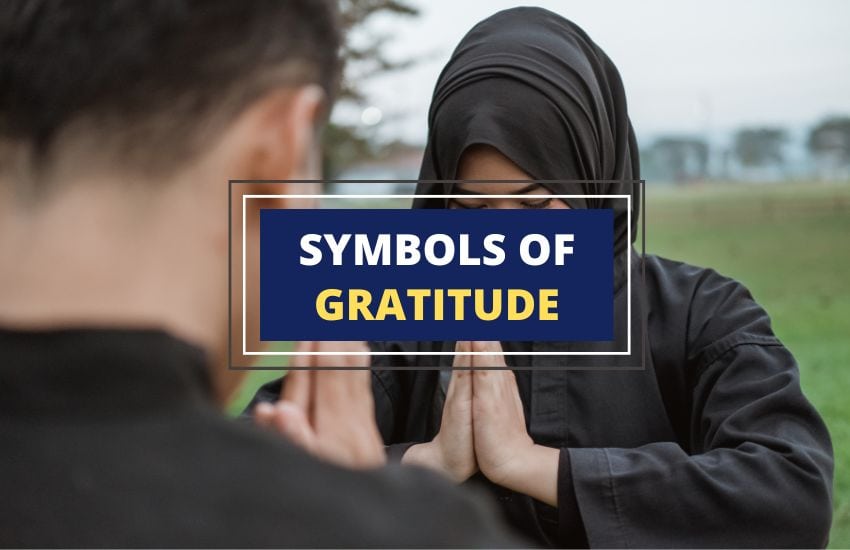
Table of Contents
Gratitude is a transformative emotion that can change our lives for the better. It helps us to focus on the positive aspects of our lives, appreciate the people around us, and find joy in everyday moments.
However, expressing gratitude can be challenging, especially when we feel overwhelmed by the stresses and challenges of daily life. That’s why symbols of gratitude can be so powerful – they offer a tangible way to express our appreciation and remind us of the good things in our lives.
So, join us on a journey of gratitude as we explore these 19 symbols worldwide, each with its unique story and significance.
1. Hands in Prayer
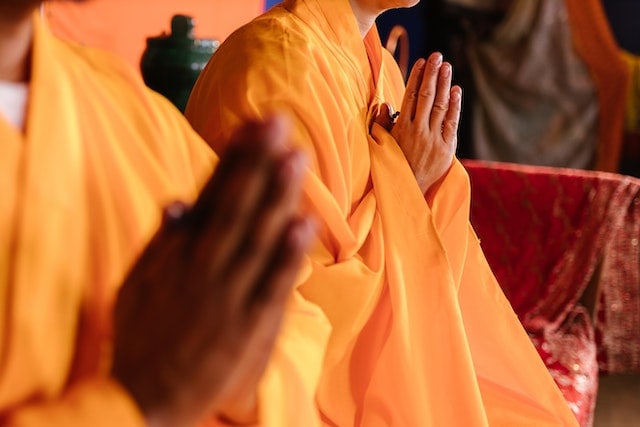
Putting one’s hands together in prayer symbolizes gratitude and humility that transcends cultural boundaries. From Buddhist monks in Tibet to Catholic priests in Rome, the gesture is used in many religious traditions to express reverence, devotion, and thanks.
The gesture is not only reserved for religious practices but it’s also used in everyday life to express gratitude and thanks. It has a long history, with early evidence dating back to ancient Egyptian and Sumerian civilizations.
In Christianity, the gesture of prayer is often accompanied by the words “thank you,” “amen,” or “blessed be.” The gesture is used to express gratitude to God and ask for blessings and guidance.
In Islam, the gesture is known as “dua” and is used to ask for forgiveness and blessings from Allah.
2. Heart Symbol

The heart symbol is a universal symbol of love but is also often used as a symbol of gratitude. It is recognized worldwide as a way to express appreciation and thankfulness towards someone or something.
The heart symbol has a long history, dating back to ancient times when it was used to represent the physical heart and its association with emotions and love.
Social media and online communications also use the heart symbol to express thanks, appreciation, and love. The heart symbol is a powerful and versatile symbol of gratitude that continues to be used in various contexts and cultures.
3. Hugging Emoji

The hugging emoji, also known as the “hug” or “embrace” emoji, has become a popular symbol of gratitude in the digital age. This simple yet powerful symbol expresses appreciation, comfort, and love toward others.
The hugging emoji is recognized worldwide and used in various contexts, from personal communications to social media and marketing campaigns.
The history of the hugging emoji can be traced back to the early days of emoticons when people used keyboard symbols to create simple faces and expressions. The first hugging emoticon was created using the characters “(つˆ⌣ˆ)つ,” which represents two people hugging. With the advent of smartphones and digital messaging, the hugging emoji was born, providing an even simpler and more accessible way to express gratitude and love.
4. Star

The star symbol is a widely recognized symbol of gratitude, representing the appreciation and recognition of something or someone. The star symbol has been used in many cultures and contexts throughout history.
In ancient Egypt, the star symbol represented the goddess Isis, the goddess of fertility, motherhood, and love. In many Native American cultures, the star symbol represents the connection between humans and the natural world.
The star symbol has also been used in religious contexts to represent divinity or spiritual guidance.
In Christianity, the star of Bethlehem guided the three wise men to baby Jesus, representing divine guidance and intervention. In Islam, the star and crescent symbols are used to represent the faith and guidance of Allah.
5. Heart-Shaped Locket
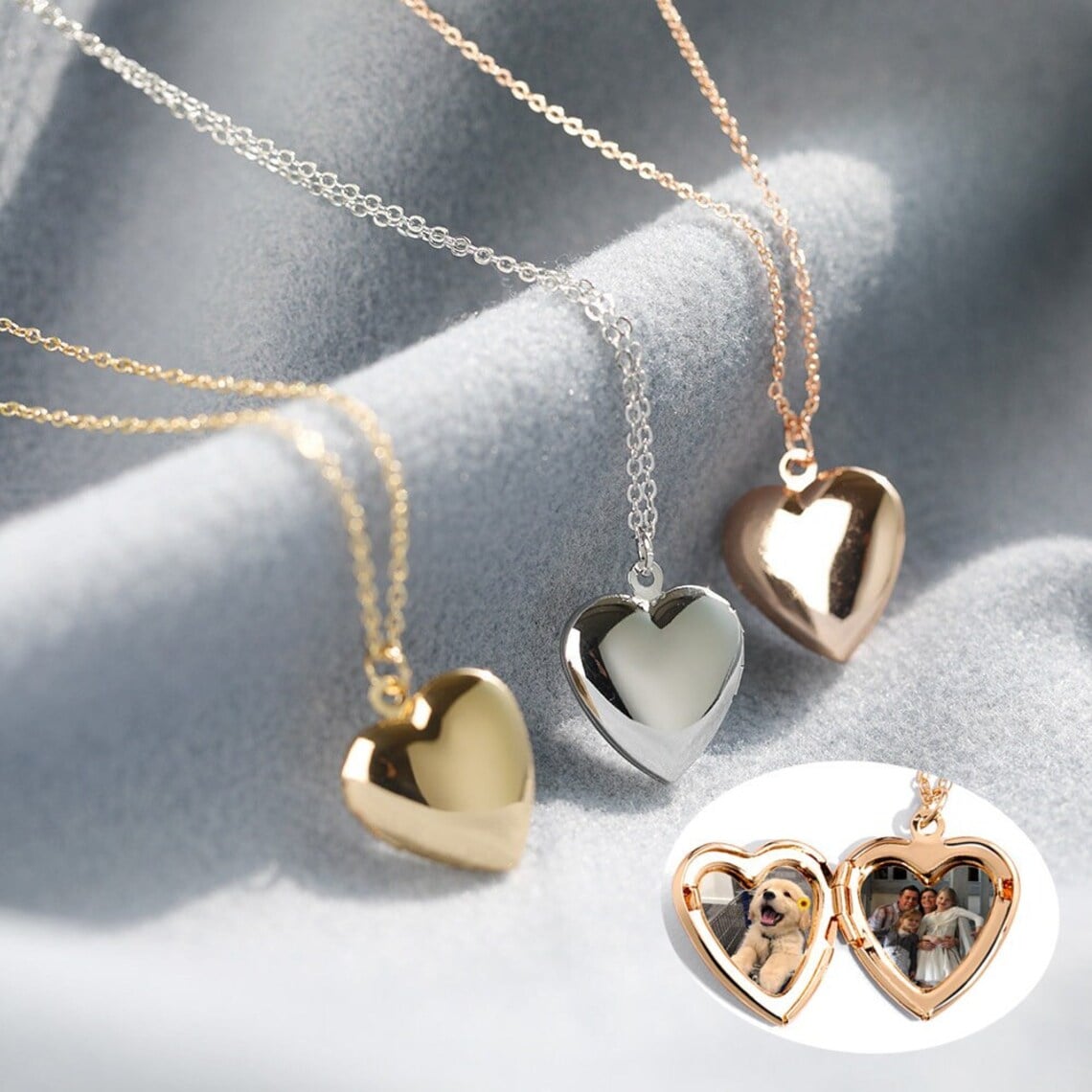
The heart-shaped locket symbolizes gratitude used for centuries to express love and appreciation toward loved ones. The locket is a small container that reveals a space for holding a small photo or another keepsake, making it a personal and meaningful symbol of gratitude.
The history of lockets dates back to the Renaissance era when they were used to hold small portraits or mementos of loved ones. The heart-shaped locket became particularly popular during the Victorian era when it was often given as a sentimental gift to express love and appreciation.
6. Diamond Ring

The diamond ring symbolizes gratitude that has long been associated with love, commitment, and appreciation. With its enduring strength and brilliance, the diamond is a fitting symbol of gratitude that has been used for centuries to represent the enduring bond between two people.
The tradition of giving a diamond ring as a symbol of gratitude and commitment dates back to ancient times when the Romans exchanged betrothal rings made of iron to symbolize the strength and permanence of their commitment.
In modern times, the diamond ring has become a popular symbol of gratitude in many cultures, often given as a token of appreciation and love towards a partner or spouse.
7. Buddha Statue

The Buddha statue is a powerful symbol of gratitude that has been used for centuries to represent the teachings and wisdom of the Buddha. With its serene expression and peaceful posture, the statue is a reminder to be grateful for the present.
The Buddha statue has a long history, dating back to ancient India, where the teachings of the Buddha originated. The statue is often depicted in various postures, each with its own symbolic meaning.
For example, the seated Buddha with his hands in a meditative position represents inner peace and self-awareness, while the standing Buddha with his arms outstretched represents compassion and empathy.
8. Hindu Swastika
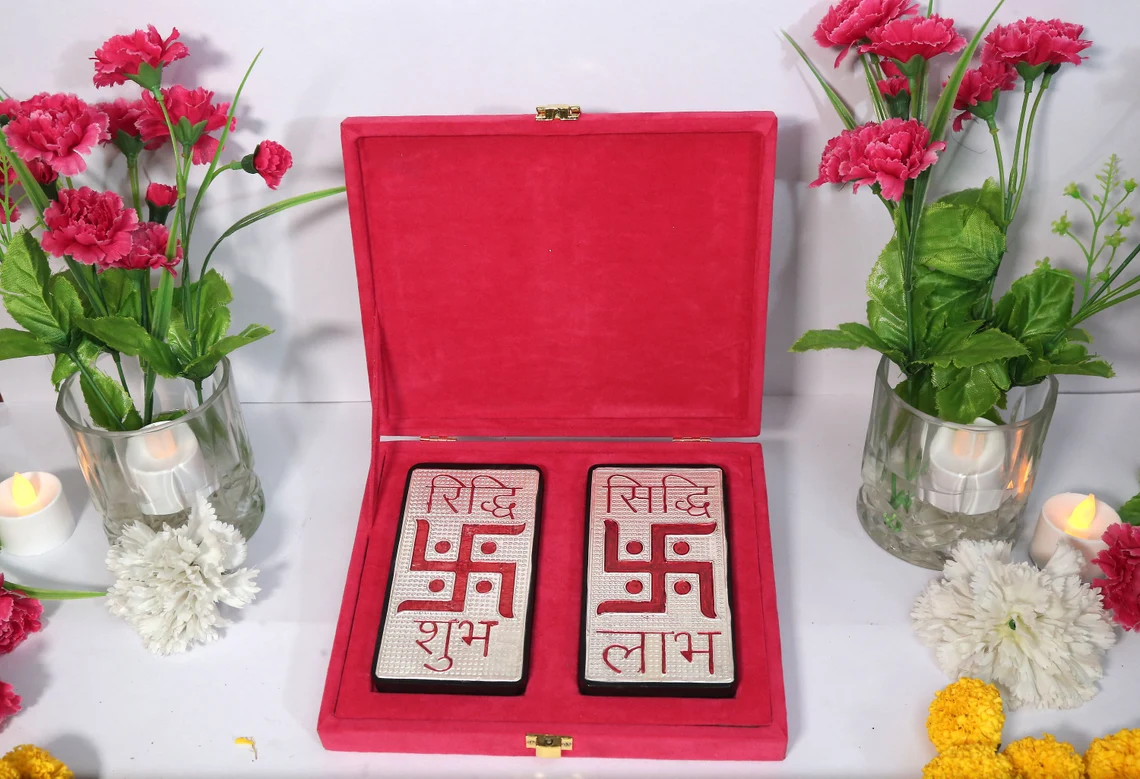
The swastika symbolizes gratitude in Hinduism, representing good luck, prosperity, and gratitude towards the divine. The swastika is a symbol that dates back to ancient times and has been used in various cultures throughout history.
However, in Western cultures, the swastika is often associated with the Nazi party and its atrocities, leading to controversy and misunderstanding.
In Hinduism, the swastika represents the sun, the source of life and energy. The symbol is often used in Hindu ceremonies and rituals, as well as in artwork and decorative motifs.
The swastika is also a symbol of gratitude towards the divine, representing the cyclical nature of life and the blessings that come with it.
In other cultures, the swastika has different meanings and associations. In Buddhism, for example, in Native American cultures, the swastika represents the four winds and directions.
9. Circle

The circle is a powerful symbol of gratitude that has been used for centuries to represent life’s cyclical nature, the universe’s continuity, and the interconnectedness of all things. It’s a universal symbol that can be found in many different cultures and contexts, representing gratitude and appreciation in various ways.
In ancient cultures, the circle was often associated with the sun, representing the source of life and energy. In Native American cultures, the circle represents the sacred hoop of life, the interconnectedness of all living things.
10. Cornucopia

The cornucopia symbolizes gratitude representing abundance, prosperity, and gratitude towards the earth and its bounty. The cornucopia is often depicted as a horn-shaped container overflowing with fruits, vegetables, and other harvest foods.
The cornucopia has a long history, dating back to ancient Greek and Roman mythology, where it was associated with the goddess of harvest and abundance.
It was also a popular symbol in medieval and Renaissance art, often used to represent the abundance and prosperity of the harvest season.
11. Shooting Star

The shooting star symbolizes gratitude, hope, good luck, and appreciation of the universe. Shooting stars are rare and fleeting, making them a powerful symbol of gratitude and appreciation for the beauty of the world.
In different cultures, shooting stars have different meanings and associations. In Greek mythology, shooting stars were believed to be the fiery trail left behind by the goddess Persephone as she returned to the underworld.
In Chinese culture, shooting stars were seen as a sign of good fortune and were often associated with the gods.
12. Northern Lights

The northern lights are a natural phenomenon symbolizing gratitude in many cultures throughout history. The northern lights are a spectacular display of light in the polar regions, creating colorful and shifting patterns in the sky.
In some indigenous cultures of Alaska and Canada, the northern lights are believed to be the spirits of their ancestors, dancing in the sky and reminding them of their connection to the natural world.
In modern times, the northern lights continue to be a popular symbol of gratitude, often used in artwork and design to represent the beauty and wonder of the natural world.
13. Ladybug

The ladybug symbolizes gratitude, representing good luck, protection, and appreciation of the natural world. It’s a sign of good luck, and many associate it with the protection of crops and plants.
In some European cultures, the ladybug is the “beetle of Our Lady” some Christians associate it with protecting the Virgin Mary. In modern times, the ladybug is still a popular symbol of gratitude, often used in artwork and design to represent good luck and appreciation towards the natural world.
The ladybug emoji is also a popular symbol of gratitude in digital communications, often used to express appreciation and good fortune.
14. Panda

The panda symbolizes gratitude, representing peace, harmony, and appreciation toward nature. The panda is a rare and beloved animal that has become an icon of conservation efforts and environmental awareness.
In Chinese culture, the panda symbolizes peace and harmony and is often associated with the Taoist concept of balance between yin and yang.
In Western cultures, the panda is often seen as a symbol of cuteness, innocence, and the natural world’s wonder. The panda is also a powerful symbol of gratitude towards nature and the importance of conservation efforts.
15. Sweet Peas
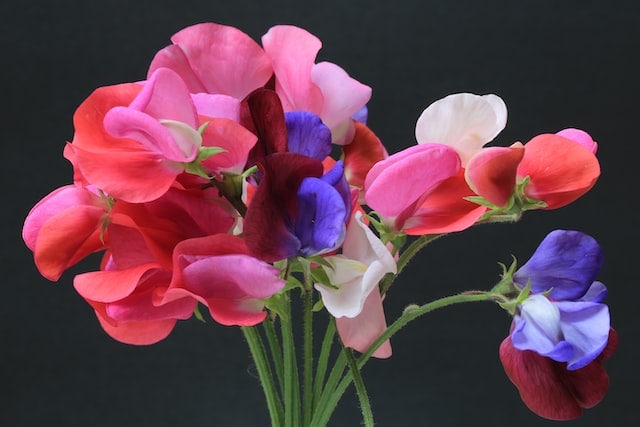
Sweet peas symbolize gratitude that represents appreciation, thankfulness, and kindness. Sweet peas are delicate and fragrant flowers that symbolize gratitude in many cultures throughout history.
In Victorian England, sweet peas were a popular flower that represented gratitude and appreciation towards loved ones. In other cultures, sweet peas are associated with kindness and gentleness, reminding us to be grateful for our small acts of kindness and compassion.
Sweet peas are also popular in the language of flowers, a communication system that uses flowers to convey meaning and sentiment. In the language of flowers, sweet peas represent gratitude and thankfulness, making them a popular choice for expressing appreciation and affection towards loved ones.
16. Bowing
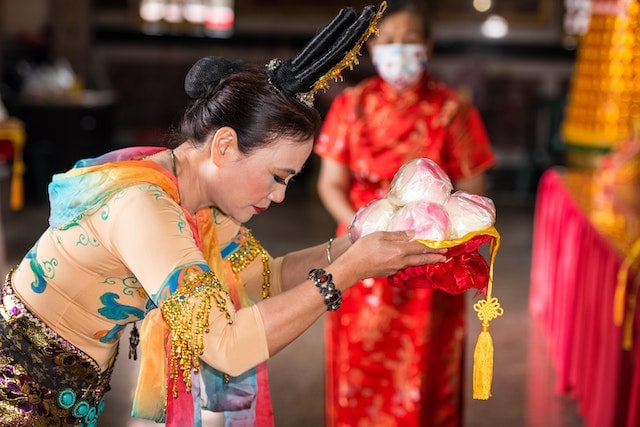
Bowing symbolizes gratitude in many cultures throughout history to show respect, humility, and appreciation toward others. In some cultures, bowing is an important part of etiquette used to show respect towards elders, teachers, and other authority figures.
In Japanese culture, bowing is an important aspect of social interaction, and different types of bows are used depending on the situation and the required level of respect. In Buddhist and Hindu cultures, bowing is often used as a gesture of humility and respect toward the divine.
Bowing is also a popular symbol of gratitude in modern times, often used in yoga and meditation practices to cultivate a sense of gratitude and respect towards the self and others.
17. Rose

Roses symbolize gratitude which represents love, appreciation, and beauty. The rose has a long history as a beloved flower and has been used to symbolize gratitude in many cultures.
Greeks associated roses with the goddess of love, Aphrodite, and were seen as a symbol of beauty, love, and passion. In Christianity, the rose is associated with the Virgin Mary and is often used in religious iconography to represent her beauty and purity.
In modern times, the rose is still a popular symbol of gratitude, often used to express love and appreciation towards others.
The different colors of roses can also convey different meanings, with red roses representing romantic love, pink roses representing gratitude and admiration, and yellow roses representing friendship and joy.
18. Fishhook

The fishhook symbolizes gratitude, representing abundance, survival, and appreciation of the natural world. The fishhook has been used by different cultures for centuries as a fishing tool and a symbol of gratitude towards the sea’s bounty.
In Polynesian culture, fishhooks were often adorned with intricate designs and were seen as a symbol of strength, resilience, and gratitude towards the ocean. In other cultures, such as Native Americans and Inuit, fish hooks were seen as a symbol of survival.
19. Buffalo

The buffalo symbolizes gratitude, representing abundance, strength, and appreciation toward nature.
The buffalo has played an important role in the culture and history of many Indigenous communities in North America, where it was revered as a sacred animal and a symbol of life, sustenance, and power.
For many Indigenous communities, the buffalo was central to their way of life, providing food, clothing, shelter, and spiritual nourishment. The buffalo was also seen as a symbol of resilience and strength, reminding people to persevere through difficult times and have faith in nature’s abundance.
Wrapping Up
Gratitude is a universal emotion that can transform our lives and improve our well-being. By exploring these 19 symbols of gratitude worldwide, we have gained insight into different cultural traditions and practices that help us express our appreciation for the people and things in our lives.
Each symbol represents a unique perspective on gratitude, offering us new ways to cultivate this powerful emotion in our daily lives.






